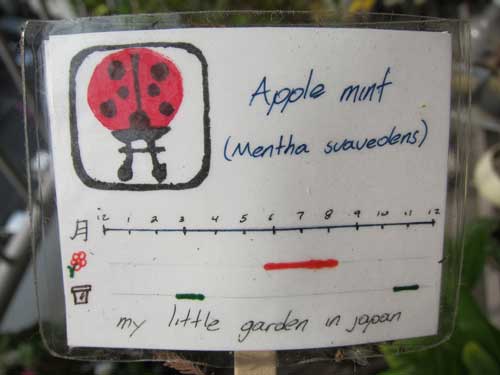
Always reminds me of @a_small_lab

家の近くで、古い団地が新しいマンションに建て替えられています。Garden Residenceという英語の名前はありふれていると思います。
A large parcel in my neighborhood is being excavated for a new housing project, called “The Garden Residence.” Who doesn’t like gardens, but couldn’t they have come up with a more unique name? I am curious what landscape will be visible to the neighbors.


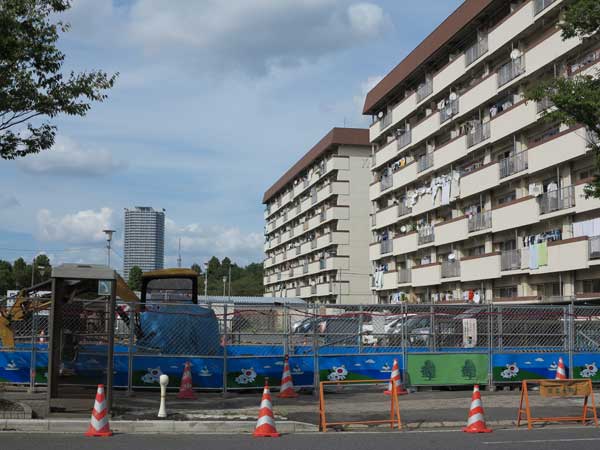
東京では、いつもどこかが工事をしています。辰巳団地から、たくさんの重なる層が見えます。背景に、スカイツリーとヘリポートがある高級マンション。前景には、団地や電話ボックス。
Tokyo is a city always being re-built. In this frame, you see the telephone booth in the midst of street repair, the 1960s Bauhaus-style public housing called “danchi,” and in the distance Sky Tree and a recent luxury tower with heliport. I am fascinated by the heliports on the new luxury towers by the waterfront. Are they a requirement for safety? Or a marketing tool for real estate companies? Should the 99% without access to heliports be concerned?

背の高い建設用クレーンと限りなく続く墓石と卒塔婆がおたがいに対話をしています。妙円寺はきれい木が多いですが、新しいマンションはどんなランドスケープを計画する予定でしょうか。
Tokyo is always under construction. Yet it is uncanny to see the building cranes echoing the hundreds of grave stones and wooden memorials below. The site is the former Harajuku Danchi public housing, which is being replaced by luxury apartments, directly above from Myoenji temple and graveyard. The temple has some very lovely, old trees. I wonder what type of landscape the new building will offer its neighbors.
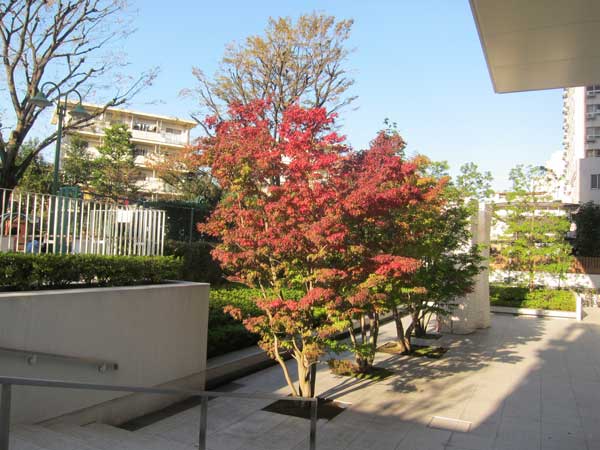
なぜ、企業のランドスケープはこんなに想像力がないのでしょうか。生活を表現していますけれど、ほとんど生命がありません。それでも、短い間、この並んでいるモミジはきれいになります。
In contrast to yesterday’s photo, here is a small row of maples, in full fall glory, lined up behind a corporate building on Road 246 in Aoyama. Corporate landscapes often look sterile and bare. This is all the more ironic since their purpose is to present the appearance of life.
This one seems all the more lacking because it borders the lush mix of garden and wildness surrounding the 1960s Aoyama danchi housing project. For a brief moment in fall, these trees are looking their best.
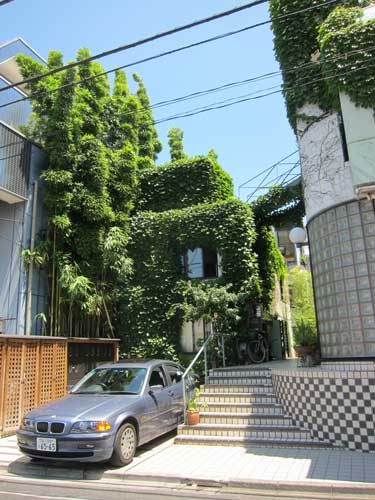
原宿の路地を歩くと、いろいろな庭を見ることができます。おしゃれな建物のグリーンカーテンや戦前からある伝統的な日本庭園もあります。私が好きな庭はシンプルで、たくましくて、さりげないです。大きな青山団地でトマトとゴーヤを見つけました。
With @luismendo visiting from Amsterdam, my Tokyo DIY Gardening pal Chris and I took him on a tour of Harajuku backstreets looking at gardens, eating tonkatsu, and stopping for some excellent cold coffee.
Harajuku is fun because the residential area has houses and gardens from all or almost all the past eight decades. The Harajuku gardens that appeal to me are similar to ones elsewhere in Tokyo for their simplicity and easy adaptation to urban life. Some results are clearly unintentional.
My photos include a three story garden of ivy and bamboo that covers one house and provides a buffer with its neighbor, a sleek concrete building’s balcony green curtains that are just starting to fill out on two floors, a blue flowering vine that somehow became a giant bush, a tiny entrance garden outside a pre-war house that has been converted into the very elegant Omotesando Coffee.
We also explored the enormous Danchi that between 246 road and Harajuku. This sprawling bauhaus-like public housing project has a wonderfully chaotic and varied set of gardens created by generations of residents. In July, we spotted lots of tomatoes, vertical bitter melon, and these purple gloves on top of an ad hoc garden support.

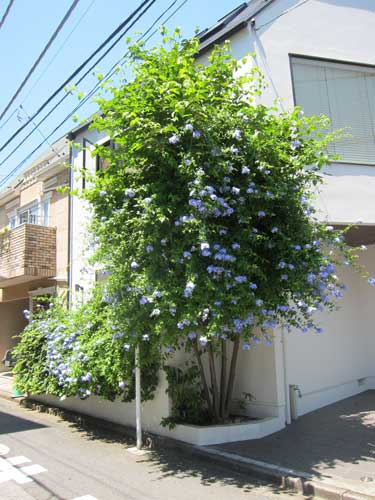

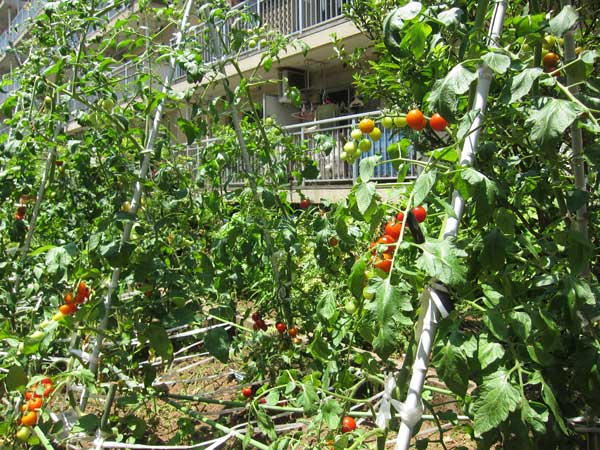



植物は、人と自然よりも、人と人をつなげることが多いようです。 面白いですね。Twitterの@mygardeninjapanさん、アップルミントをありがとうございます。ベランダからベランダへ。
It’s funny how plants connect you even more with people than nature. Thank you Twitter’s @mygardeninjapan for this apple mint. From balcony to balcony!
I recently met up with Twitter’s @mygardeninjapan after exchanging many online comments and thoroughly enjoying his detailed documentation of his balcony garden in Yokohama. Along with @a_small_lab and Tokyo DIY Gardening‘s Chris, we had a bento lunch in a temple garden and then a fascinating walk around the Omotesando danchi.
It was very kind of @mygardeninjapan to give us these small wooden pots with mint plants from his garden and hand-made signs with illustrated care instructions. His ladybug logo reminds me of his blog story about his efforts to attract ladybugs to his balcony garden. I am looking forward to growing and eating this mint in my balcony.
